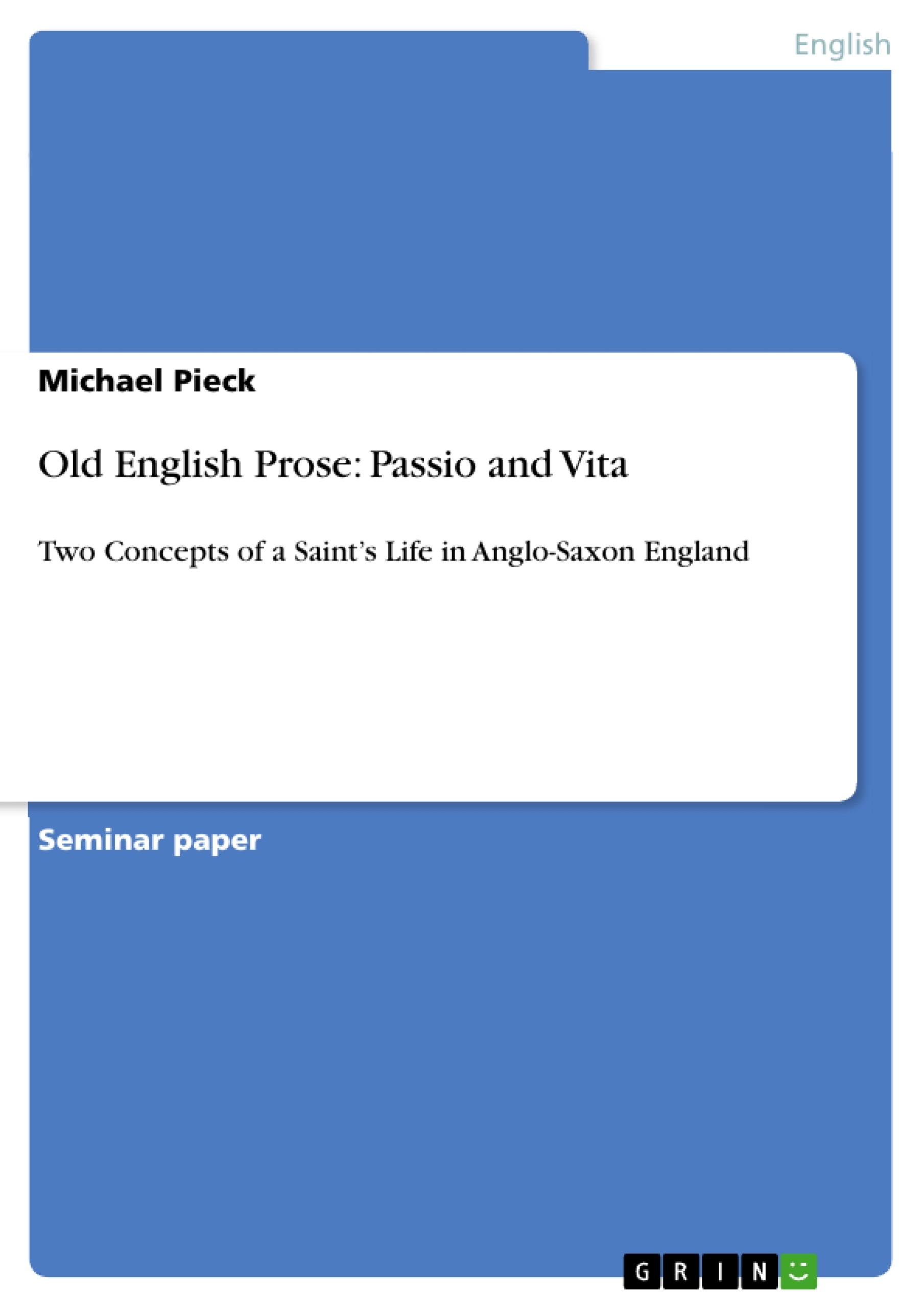Lives of saints were a very popular genre in Christian Europe throughout the entire Middle Ages, and their popularity did not cease until the Reformation in the 16th century. Since Late Antiquity two basic concepts of saints’ lives had evolved, the passio (‘passion’) and the vita (‘life’). “The passio was the literary form appropriate for a saint who had been martyred for his/her faith, whereas the vita properly pertained to a confessor (that is, a saint whose impeccable service to God constituted a metaphorical, not real, martyrdom).” (Lapidge 1991: 252)
Saints’ lives circulated widely in Anglo-Saxon England, most of which were composed in Latin. At the end of the 10th century the monk and author Ælfric of Eynsham translated a collection of forty lives of saints into the Old English vernacular. Together with his Catholic Homilies, they represent the heyday of Old English prose in the late 10th and early 11th century. The overall intention of his Lives of Saints is the same, namely to commemorate a saint on his or her feast day, and to instruct and edify the reader or hearer. The particular lives, however, are treated individually according to the different concepts, the passio and the vita. Two of Ælfric’s Lives of Saints, St Edmund’s and St Ætheldryth‘s, represent these two concepts. The former describes a man’s life of active participation with a Christian impetus culminating in martyrdom and death, whereas the latter represents a woman’s life remote from worldly affairs, which can also be described as a passive life.
Ælfric was not just a learned monk and translator but a formidable writer and stylist in his mother tongue. The fact that he had written a book for teaching Latin in Old English leads to the assumption that he must have been familiar with the peculiarities of grammatical constructions in both languages. A comparison between The Life of St Edmund (passio) and the Life of St Æthelthryth (vita), will show that––despite many parallels––he strengthens the individual concepts, male and active vs. female and passive, not only by purely stylistic but also grammatical means.
Table of Contents
- Introduction
- Historical Situation: England in the 10th Century
- The Way to Christianity
- The Beginning of Monastic Life
- Anglo-Saxon Society
- The Venerable Bede
- The Vikings
- King Alfred
- The Benedictine Reform
- The Author: Ælfric of Eynsham
- The Genre
- The Importance of Saints
- Saints' Lives – a Typical Christian Genre
- Linguistic Analysis
- General observations
- The Sources
- Overall Structures of the Texts
- Syntactic Structure
- Alliterative Elements
- Discourse
- Forms of Address, Interjections
- Passive Constructions
- Passive Clauses: Two Definitions
- General Considerations
- The Use of Passive in Old English
- Examples from the Texts
- General observations
- Conclusion
Objectives and Key Themes
This term paper examines the concepts of "passio" and "vita" in Anglo-Saxon hagiography, specifically focusing on two works by Ælfric of Eynsham: the Life of St Edmund and the Life of St Æthelthryth. The paper explores how these concepts are reflected in the texts through linguistic analysis, particularly focusing on grammatical constructions like passive voice, to understand how Ælfric conveys the contrasting narratives of active martyrdom and passive contemplation.
- The evolution of "passio" and "vita" as concepts in hagiography.
- The significance of saints' lives in Anglo-Saxon England.
- Ælfric's role in translating and interpreting these concepts into Old English prose.
- Linguistic analysis of grammatical constructions to highlight the distinction between "passio" and "vita" narratives.
- The cultural and historical context of Anglo-Saxon England and its influence on hagiography.
Chapter Summaries
The paper begins with an introduction that establishes the context of saints' lives as a popular genre in Christian Europe and introduces the two key concepts, "passio" and "vita," which are explored in detail throughout the text. Chapter 2 provides a historical overview of Anglo-Saxon England in the 10th century, focusing on the spread of Christianity, the rise of monasticism, and the socio-political landscape.
Chapter 3 delves into the life and works of Ælfric of Eynsham, highlighting his significance as a translator and writer of Old English prose. Chapter 4 examines the genre of saints' lives in greater detail, discussing the importance of saints in Anglo-Saxon culture and the typical features of this genre. Chapter 5 presents a comprehensive linguistic analysis of Ælfric's works, focusing on the use of passive constructions and other grammatical features to emphasize the contrasting concepts of active and passive martyrdom.
Keywords
The primary keywords and concepts explored in this term paper include: Anglo-Saxon England, Old English prose, hagiography, saints' lives, "passio," "vita," Ælfric of Eynsham, linguistic analysis, grammatical constructions, passive voice, active martyrdom, passive contemplation, cultural context, historical background, and the influence of Christianity on Anglo-Saxon society.
- Quote paper
- Michael Pieck (Author), 2009, Old English Prose: Passio and Vita, Munich, GRIN Verlag, https://www.grin.com/document/150971



